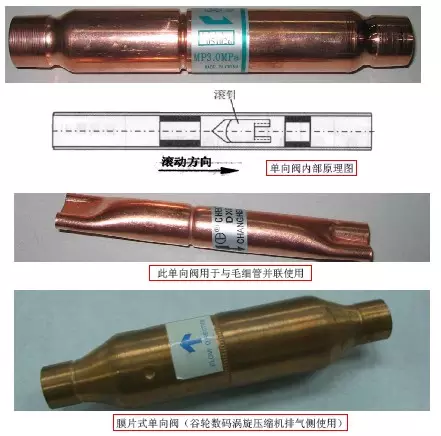Introduction to Basic components of air conditioning system
I. Compressor
Below 3HP, rotor compressor is generally used, which has lower cost; 3HP ~ 10HP generally adopts scroll compressor, which has higher efficiency. In comparison:
Advantages of scroll compressor:
1. There is no reciprocating mechanism, so the structure is simple, the volume is small, the weight is light, the parts are few (especially the vulnerable parts are few), and the reliability is high;
2. Small torque change, high balance, small vibration and stable operation, so the operation is simple and easy to realize automation;
3. It has higher efficiency within the range of its adaptive refrigerating capacity;
4. Low noise
Disadvantages of scroll compressor:
1. The surface of the moving parts is mostly in the shape of curved surfaces. The processing and inspection of these curved surfaces are relatively complex, and some need special equipment, so the manufacturing cost is relatively high;
2. Between the moving parts or between the moving parts and the fixed parts, a certain movement gap is often maintained to achieve the sealing effect, and the gas will inevitably cause leakage through the gap, this limits the difficulty of the rotary compressor to reach a larger compression ratio.
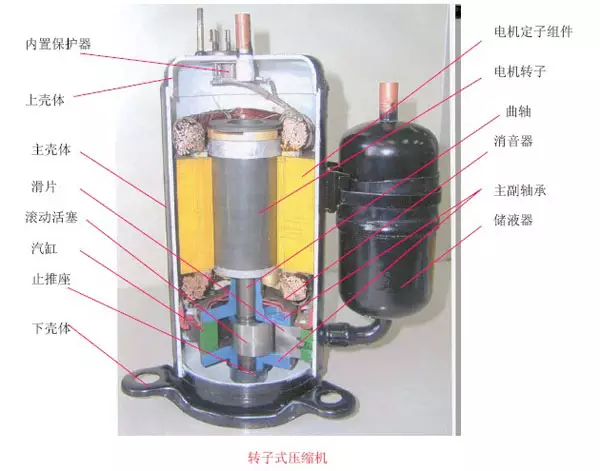
Scroll Compressor
Scroll compressor generally can be divided into two types: High pressure chamber and low pressure chamber, and their advantages and disadvantages are as follows:
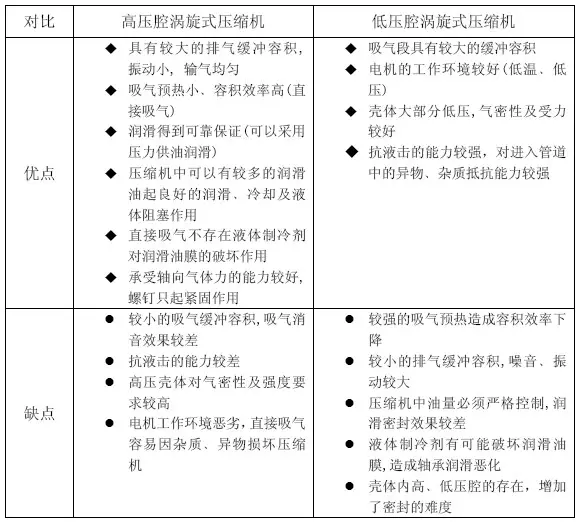
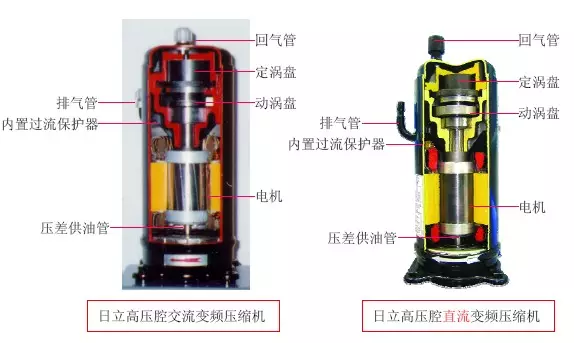
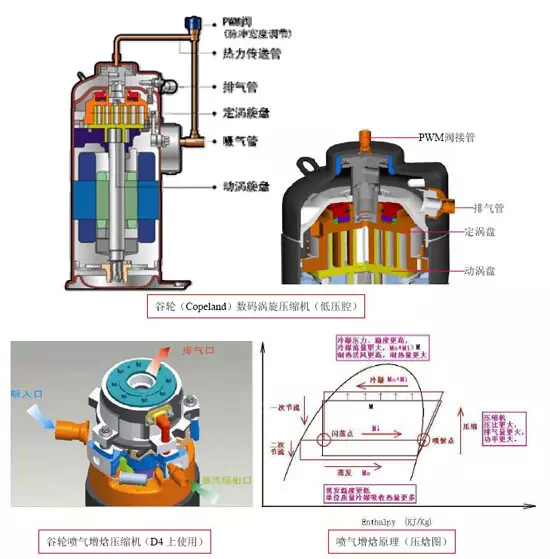
Two. Four-way valve
The four-way valve consists of three parts: pilot valve, main valve and solenoid. Solenoid can be disassembled; Pilot valve and main valve are welded into one. The working principle is to open and close the left or right valve plug through the on-off of solenoid current, so that left and right capillary tubes can be used to control the pressure on both sides of the body, make the slider in the valve body slide left and right under the action of pressure difference to change the flow direction of refrigerant and achieve the purpose of refrigeration or heating.
Brief introduction of working principle of four-way valve
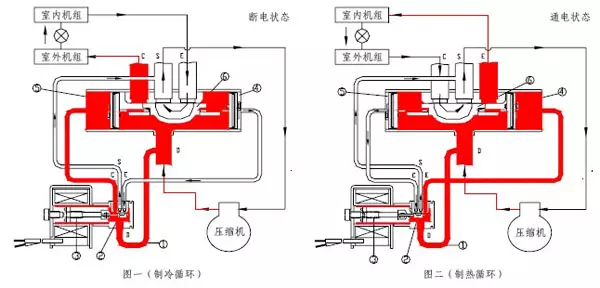
① Capillary Capillary tube ② Pilot sliding valve Pilot slide valve ③ compression spring Compress spring
④ Piston cavity Piston chamber ⑥ main sliding valve Body slide valve
When the solenoid is in the power-off state, as shown in Figure 1, the pilot sliding valve ② moves left under the drive of compression spring ③, and the high-pressure gas enters the capillary ① and then enters the piston cavity ④. On the other hand, the gas discharged from the piston cavity ⑤, due to the pressure difference between the two ends of the piston, the piston and the main sliding valve ⑥ move left, so that the E and S connecting pipes are connected, and the D and C connecting pipes are connected, thus forming a refrigeration cycle.
When the solenoid is at power-up state, as shown in Figure 2, the pilot sliding valve ② overcomes the tension of the compression spring ③ under the action of the magnetic force generated by solenoid and moves to the right, the high-pressure gas enters the capillary ① and then enters the piston ⑤ chamber. On the other hand, the gas in the piston cavity ④ is discharged. Due to the pressure difference between the two ends of the piston, the piston and the main sliding valve ⑥ are shifted to the right, so that the S and C connecting pipes are connected, and the D and E connecting pipes are connected, thus forming a heating cycle.
Appearance and section view of four-way valve:
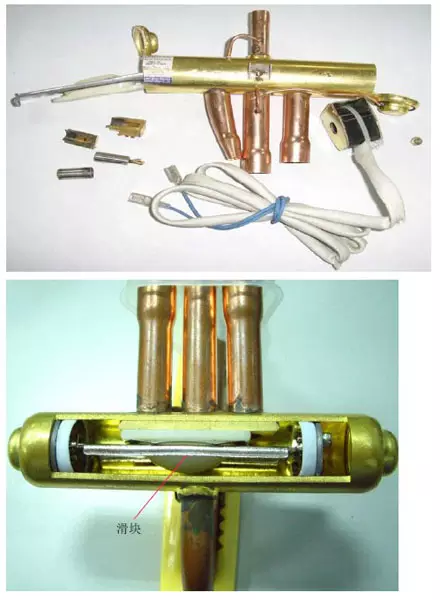
Common faults judgment and analysis solutions of four-way valve
The air conditioner cannot normally convert from refrigeration to heating or from heating to refrigeration. This situation is the failure that the four-way valve cannot normally change direction. The main reasons are as follows:
1) solenoid is damaged, pilot valve does not work;
2) the slide of the valve inside the four-way valve is stuck or stuck by the stolen goods (such as oxide skin, sundries and deteriorated grease) inside the system, and some of them can be solved by tapping the four-way valve body with wooden sticks or glue stick;
3) If the valve body is damaged by external impact force (the valve body is concave), the sliding valve cannot be reversed, which can be judged from the appearance;
4) due to the liquid hammer inside the system, the valve slip guide rack is broken, the end cover is damaged and deformed, and the direction cannot be reversed;
5) the internal clearance of the four-way valve is too large. When the valve seat is welded, the leakage is slightly burnt out and exceeds the standard, resulting in cross-Air, which balances the pressure at both ends of the sliding valve and cannot push the sliding valve reversing;
6) The main slider of the four-way valve is broken due to system pressure, which leads to the main slider being unable to be reversed;
7) pilot valve the internal cavity is dirty and blocked, resulting in pilot valve unable to work;
8) when starting up, the main slider is in the middle of the valve body, and the pressure difference between the two ends cannot be established during power-on, resulting in no reversing. Part of this fault can be solved by tapping the valve body and charging refrigerant;
9) The system has slow leakage and less refrigerant, so the pressure difference required for reversing cannot be established;
III. Electronic expansion valve
The role of electronic expansion valve in the refrigerant system is: throttling function, that is, adjusting the flow rate of high-pressure liquid refrigerant that the liquid pipeline enters the evaporator, and maintaining the pressure difference between the high-pressure side and the low-pressure side of the system, to ensure that the refrigerant can be evaporated at the desired low pressure in the evaporator, and at the same time, it can condense in the condenser under the high pressure condition.
Electronic expansion valve is characterized by large adjustment range, rapid and sensitive action, precise adjustment, stability and reliability. Refrigerant can flow in both positive and negative directions in electronic expansion valve, avoiding the disadvantage that the thermal expansion valve has only one direction. When used in heat pump, the refrigeration system can be greatly simplified. When the refrigeration system is shut down, the electronic expansion valve can be completely closed, so that no solenoid valve needs to be installed at the refrigerant inlet.
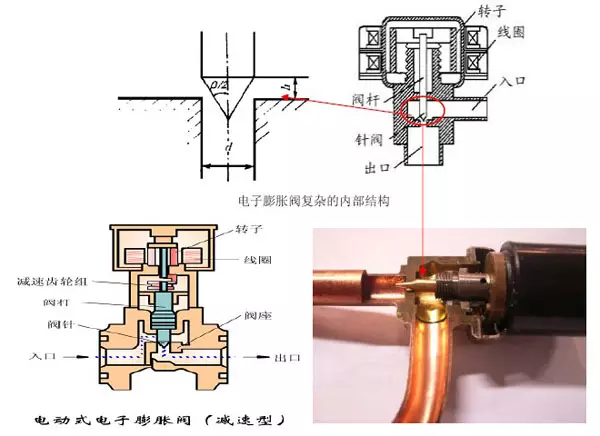
Electronic expansion valve fault detection:
①. Detect the output of the circuit board: remove the electronic expansion calve component on the machine and insert a good electronic expansion calve component into the circuit board to see if the electronic expansion calve component has any action. If there is an action, then perform the next detection operation; If there is no action, there is a problem with the circuit board. Check the circuit board before performing the following
Check the operation.
②. Detection electronic expansion valve coil: as shown in the picture on the right, electronic expansion valve is driven by DC 12V, and 6 wires are led out (there are also 5 wires, that is, two common terminals are made together), generally, the common end of the electronic expansion valve coil is red and brown wire (when square AMP male/female lug wire Wire Group thick line, generally indoor unit) or gray wire (when JST power strip wire group, generally outdoor unit), and the DC resistance value of each phase is 46±5 Ω. The specific method is to measure the DC resistance value between the common end and other color lines with the ohmic gear of the multimeter. If the resistance value is met, the coil is normal, and then the next operation is carried out; Otherwise, the coil is burnt out, and the coil must be replaced before the next detection operation.
③. Check whether the electronic expansion valve valve body is blocked, leaking and has Sundries: most EXV faults are caused by impurities such as oxide scale and welding slag in the system, which can be repeatedly powered on and powered off (for indoor unit internal unit, remote control can be used to switch this internal unit repeatedly, and at the same time feel the action of throttling components and the flow of refrigerant by hand; For outdoor unit, three minutes after power-on to the system, EXV will be closed first and then opened to a certain degree of opening, which can also be felt by hand) at the same time, beat the valve body with hard objects and use the impact force of refrigerant to break through obstacles; if this method does not work, replace the valve body and clean the system.
Note: indoor unit there is no possible impact of unified power supply: When some indoor unit are suddenly powered off, their electronic expansion valve may still maintain a certain opening, as follows:
①. When the power-off indoor unit EXV is turned on, a large amount of refrigerant still passes through, but the fan does not operate and the refrigerant cannot be evaporated; The entire evaporator and pipeline are at a low temperature. After meeting the indoor hot air, A large amount of gel-in-lotion may be generated.
②. A large amount of low-temperature refrigerant flows through indoor unit of power failure, and directly returns to the compressor in liquid form without evaporation, which may cause liquid hammer and damage the compressor.
③. As part of the refrigerant flows through indoor unit of the power failure, the flow rate of the refrigerant in other normal operation indoor unit is relatively reduced, and the cooling effect will be relatively poor.
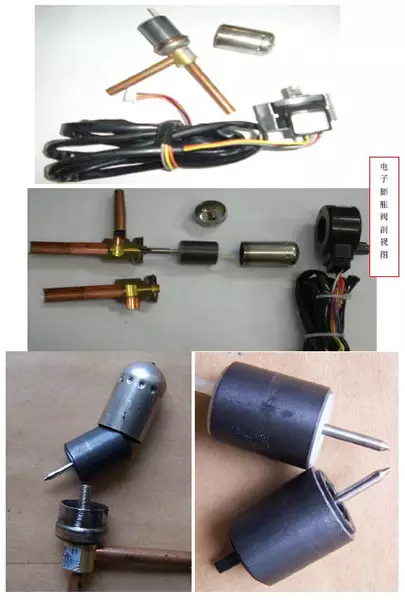
IV. Solenoid valve
Solenoid valve only plays an on-off role. Generally, under 220V voltage, it is turned on when it is powered on, and closed when it is powered off; In addition, solenoid valve can only be side in and out, and there will be leakage in reverse.
Common faults are as follows:
①. The pressure difference between the front and back of the solenoid valve is too large or inner spring is invalid, resulting in the valve can not be closed and leakage;
②. The system contains sundries and blocks the solenoid valve core (only 2mm or 6mm at the valve core);
③. The given voltage is abnormal or there is inductive electricity, which makes the solenoid valve abnormal switch (the voltage of about 100V may open the solenoid valve);
④. Install the solenoid valve in reverse mode during maintenance, resulting in leakage (it must be side in and out);
⑤. Solenoid bad.
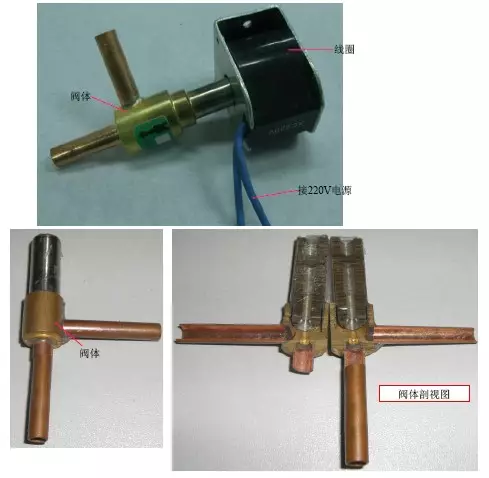
V. Check valve
Check valve is also called check valve. It allows the refrigerant to flow freely only in one direction, and the one-way valve is mainly used on heat pump air conditioners and is connected in parallel with auxiliary capillary tubes in the system; when multiple compressors are used in combination, a one-way valve is installed at the exhaust port of each compressor to prevent refrigerant from flowing back. If reverse leakage is found in the one-way valve here, the compressor may burn down.
